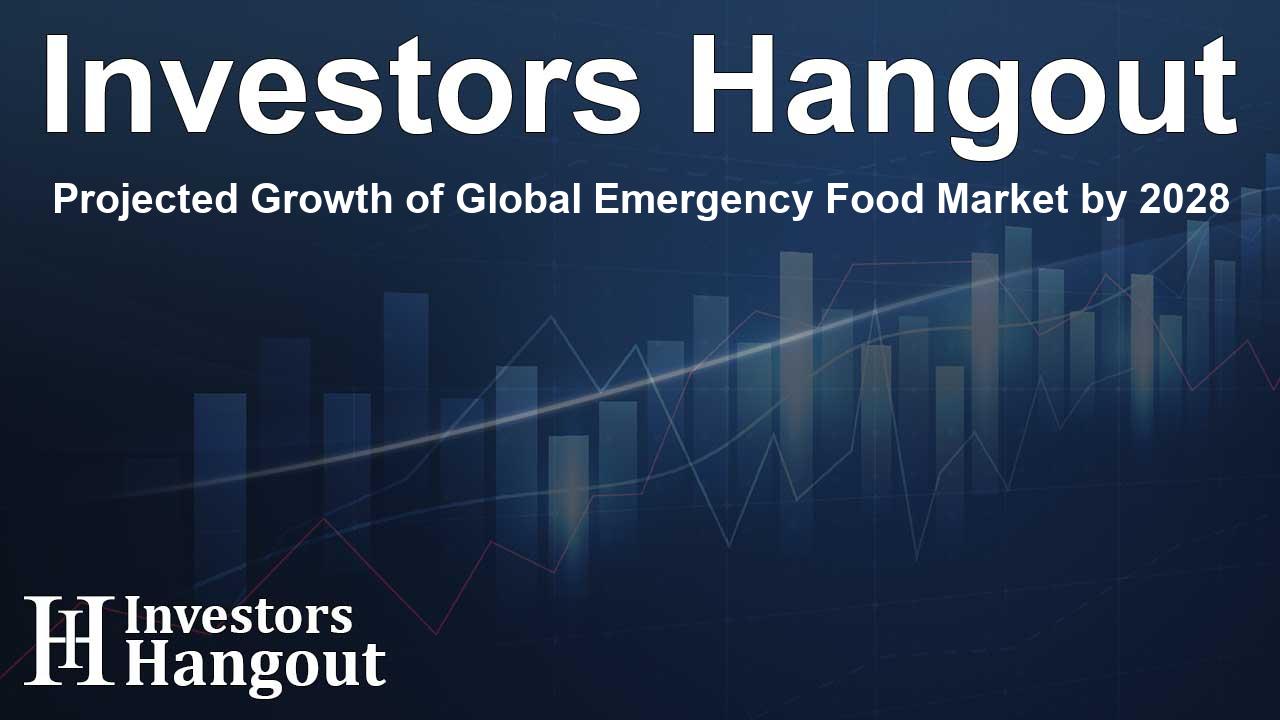Projected Growth of Global Emergency Food Market by 2028

Overview of the Global Emergency Food Market
The emergency food market is poised to see significant growth, with an estimated increase of USD 3.20 billion between 2024 and 2028. This growth reflects a compound annual growth rate (CAGR) of 7.35%. The increasing frequency of natural disasters and the growing awareness of emergency preparedness are key drivers behind this trend.
Market Segmentation: A Closer Look
Understanding the Products
The market is categorized into several segments. Among them, ready-to-eat meals stand out as the fastest-growing category. These meals require no refrigeration or cooking, making them an ideal solution during emergencies when access to food might be scarce. Products like non-perishable milk, infant food, dried fruits, and cereals also play vital roles in emergency situations.
Distribution Channels Explained
Occupying another crucial aspect of the market are distribution channels. Consumers can access emergency food supplies through both online and offline channels. This flexible approach enables easy access for individuals and organizations alike, meeting the rising demand for these essential products.
Geographical Insights into the Market
The emergency food market is not uniformly distributed but varies significantly across regions. Areas such as North America, Europe, Asia-Pacific, South America, and the Middle East and Africa present unique challenges and opportunities for growth. Each region has distinct consumer preferences and availability of products, affecting overall market dynamics.
Understanding Key Markets
In particular, countries such as the US, China, India, the UK, and Germany are leading the way in market consumption. The convergence of urbanization, an increasing number of working professionals, and heightened awareness about food security further propels this growth.
The Importance of Ready-to-Eat Meals
Ready-to-eat meals are essential in the emergency food landscape. The demand is fueled by various factors, including the growing millennial population and the increasing number of individuals who prefer convenient meal options due to busy lifestyles. These factors contribute to the consistent rise in ready-to-eat meal products, making them crucial in disaster management.
Market Overview: Addressing Food Security Challenges
The emergency food market plays a vital role in ensuring food security, particularly during crises. With the prevalence of climate-related disasters such as hurricanes, floods, and wildfires, the need for reliable food sources becomes paramount. Emergency food supplies include items like canned goods, peanut butter, and infant food, all of which have a long shelf life to withstand delivery and storage challenges.
Innovative Solutions and Adaptations
Companies are vigorously investing in research and development. They are focused on creating innovative, high-quality products to meet diverse consumer needs. This approach not only enhances market offerings but also supports continuous growth within the sector.
Key Players and Industry Contributions
Several companies significantly influence the emergency food market, including major players like Conagra Brands Inc., Del Monte Foods Inc., and General Mills Inc. Their ongoing efforts contribute to market resilience, catering primarily to the needs of disaster relief, outdoor activities, and military applications.
Technology's Role in Food Preservation
Technologies such as freeze-drying extend the shelf life of perishable food items, making them ideal for emergency situations. These innovative preservation methods not only ensure food quality but also enhance the convenience of use in diverse scenarios.
Conclusion: Preparing for the Future
Overall, the emergency food market is set for robust growth as it addresses the critical need for nutritious and long-lasting food solutions. With the increasing awareness of emergency preparedness and the ongoing innovations in the sector, both consumers and businesses will benefit immensely.
Frequently Asked Questions
What is the projected growth of the emergency food market?
The emergency food market is projected to grow by USD 3.20 billion from 2024 to 2028.
What factors are driving the growth of this market?
Increased frequency of natural disasters, growing awareness of emergency preparedness, and a rising demand for convenient food options are key drivers.
Which product segment is experiencing the fastest growth?
Ready-to-eat meals are currently the fastest-growing product segment in the emergency food market.
What role does distribution play in the market?
Distribution channels, both online and offline, significantly affect the accessibility and availability of emergency food products.
Who are the main players in the emergency food industry?
Key players include Conagra Brands Inc., Del Monte Foods Inc., and General Mills Inc., among others, who contribute substantially to market growth.
About The Author
Contact Hannah Lewis privately here. Or send an email with ATTN: Hannah Lewis as the subject to contact@investorshangout.com.
About Investors Hangout
Investors Hangout is a leading online stock forum for financial discussion and learning, offering a wide range of free tools and resources. It draws in traders of all levels, who exchange market knowledge, investigate trading tactics, and keep an eye on industry developments in real time. Featuring financial articles, stock message boards, quotes, charts, company profiles, and live news updates. Through cooperative learning and a wealth of informational resources, it helps users from novices creating their first portfolios to experts honing their techniques. Join Investors Hangout today: https://investorshangout.com/
The content of this article is based on factual, publicly available information and does not represent legal, financial, or investment advice. Investors Hangout does not offer financial advice, and the author is not a licensed financial advisor. Consult a qualified advisor before making any financial or investment decisions based on this article. This article should not be considered advice to purchase, sell, or hold any securities or other investments. If any of the material provided here is inaccurate, please contact us for corrections.
